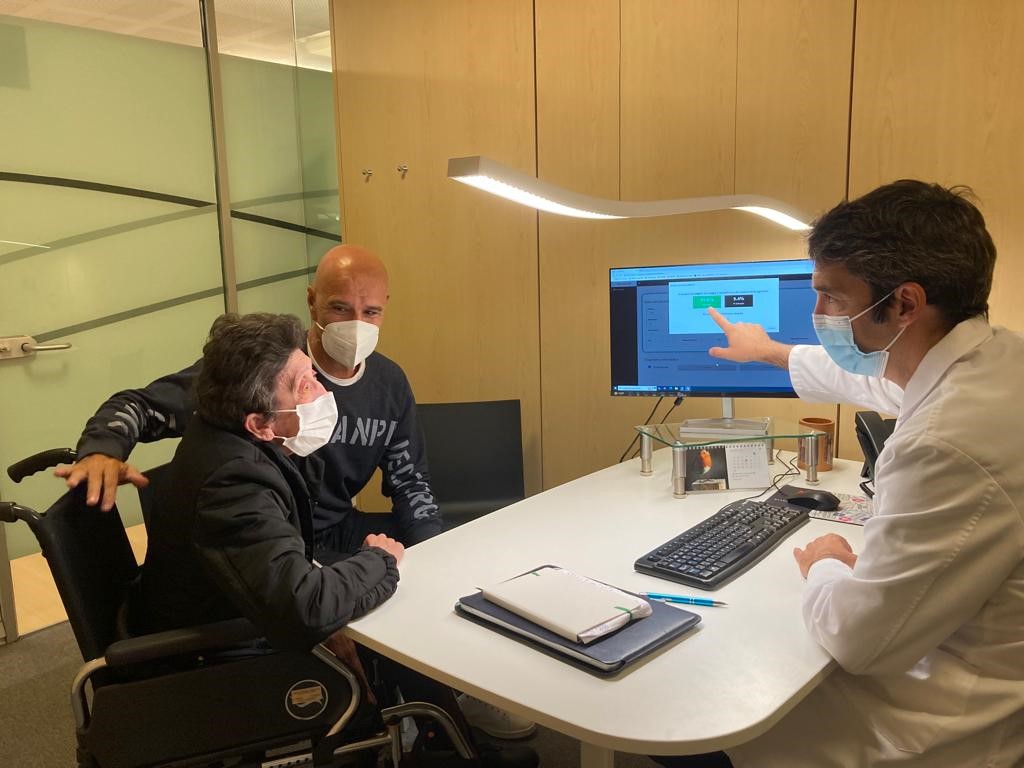
Miranza leads the development of a virtual assistant for the indication of glaucoma treatment using artificial intelligence
The assistant also predicts intraocular pressure six months after treatment
Artificial intelligence (AI) and big data are changing the world: more and more sectors are implementing solutions based on these two technologies. Ophthalmology is one such sector. The most recent example is directly related to Miranza and consists of the development of a virtual assistant for professional decision-making in the treatment of glaucoma, a chronic disease of the optic nerve with grave consequences for the visual health of patients. This software combines the latest breakthroughs in AI and big data and provides personalised therapeutic advice for the best type of glaucoma treatment for each case. It also predicts patients’ intraocular pressure—a key condition of glaucoma—six months after application of the treatment. An outstanding ally.
The key to more precise ophthalmological care
The virtual assistant is about to enter its third stage of testing after having surpassed the training and in-house validation stages. The training was conducted by the Miranza Begitek ophthalmology centre in San Sebastian, along with IT engineers of Deusto University under the supervision of AI expert Dr Enrique Onieva and with the financing of the Centre for the Development of Industrial Technology of the Ministry of Science and Innovation. The training involved the input of all patients’ relevant variables, such as age, intraocular pressure, campimetric damage, corneal thickness, damage to optic nerve, whether or not patients had already undergone surgery, visual acuity and whether or not patients have cataracts. The selection of these parameters, which are unique to each patient, enables the assistant to indicate fully personalised treatment.
This is precisely the object of praise of Dr Aritz Urcola, glaucoma specialist at Miranza Begitek and the coordinator of this research project on which he has been working in recent years, along with the optometrist Igor Illarramendi, who also works at the San Sebastian clinic. Dr Urcola affirms that, “with this assistant, we are able to analyse a series of the patient’s quantitative data in order to better determine whether a more or less aggressive strategy should be followed, depending on the rate of progression of the disease, the patient’s life expectancy, the damage to the optic nerve caused by the glaucoma or the patient’s intraocular pressure”. But this kind of software is no substitute for a skilled professional: it is a highly advanced, supplementary tool that increases significantly the precision of the diagnoses and treatments of eye-care professionals. All for our patients’ well-being.
Miranza and the future of AI in ophthalmological diagnoses
Furthermore, like other AI-based software, the virtual assistant “learns” from its experiences, improving over time as it is used to perform diagnostic tasks. This is why, says Dr Urcola, this project is only the beginning of a much more intense relationship between new technologies such as AI and ophthalmology. He acknowledges that “with the advent of AI, a single image will allow us to know whether a patient is glaucoma-prone, glaucomatous or healthy”. It is expected that the technology will eventually be used in the treatment of other eye conditions. The implications are huge. We at Miranza want to pioneer this field, and our participation in the design of this virtual assistant is only the beginning. We intend to remain leaders in the use of technology for the diagnosis and treatment of ocular disorders.